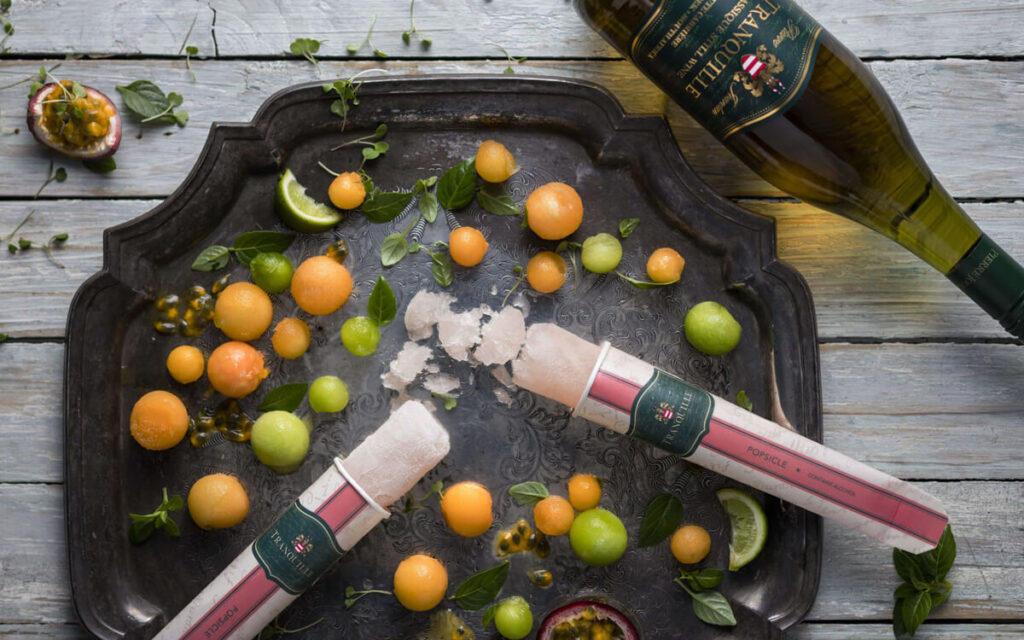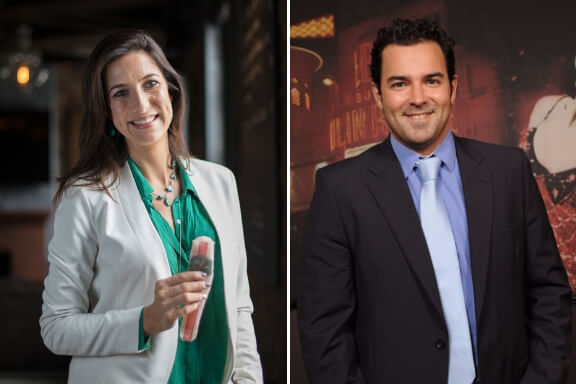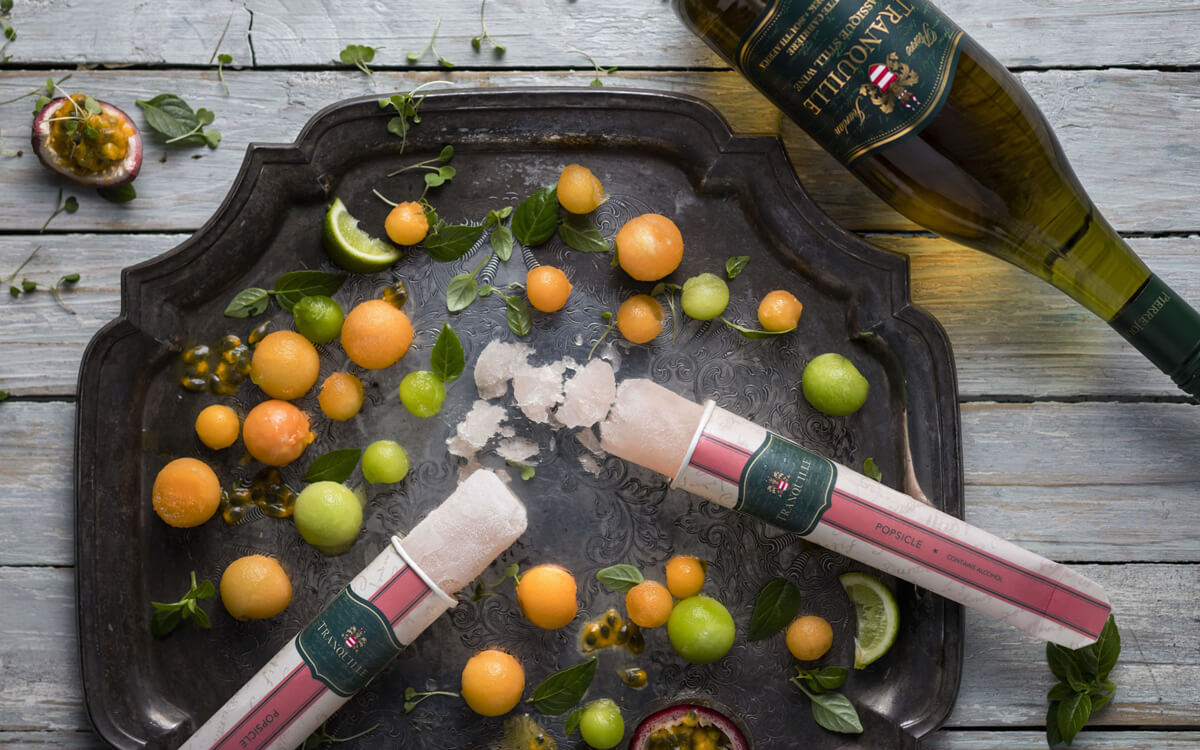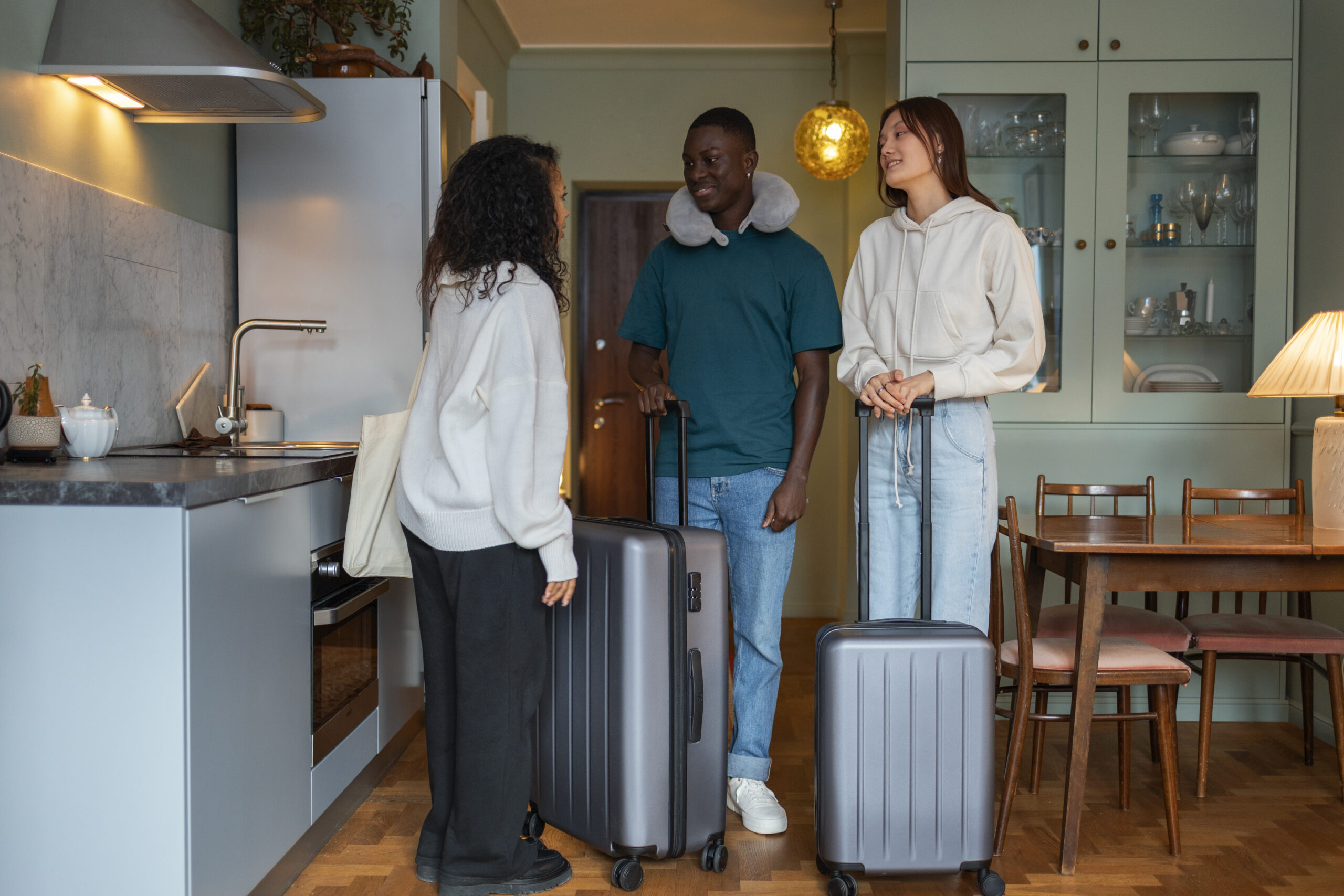
Frost Popsicles, a unique range of frozen alcohol popsicles, first hit the stores locally in September 2016. An aggressive growth strategy by co-founders Natasha Fagri and Jon-Marc Carvalho saw them launch in 25 Pick n Pay stores and now are stocked in over 60, as well as in Wellness Warehouse, Dis-chem and Spar Tops and their own online store.
The product range started with two alcohol popsicles made in collaboration with Haute Cabriere wine farm – a Pierre Jourdan Tranquille and a Brut popsicle.
Their alcohol range includes Blood Orange Screwdriver, a Passion and Peach Margarita, a G&T Classic and a G&T Berry Infusion, created in collaboration with Hope on Hopkins Distillery.
In response to consumer trends and demand they launched a non-alcoholic range and now also have a non-alcoholic Pomegranate, Grapefruit and Hibiscus, a Peach, Strawberry and Banana, and a Vanilla Coffee (the only one in the range that is not vegan friendly).
Because of their local success, they saw an opportunity to expand internationally and currently also export to Botswana, Mauritius and Singapore with further international growth plans on the cards.
We’d be crazy not to want to expand to strategically chosen international markets when the timing is right and the opportunity arises
A winning formula

A lot of research and development went into manufacturing what was a niche and never been done before, product.
Fagri developed the original Frost Popsicles on her stove at home, experimenting for 13 months until she had what was the winning formula.
A laboratory was then brought on board to stabilise the recipe. From there packaging needed to be developed and this produced its own set of challenges as the alcohol in the formula required a special tetrapak lining – this took another year of research and development to create the perfect packaging – which is recyclable.
Operational challenges
As part of their growth strategy they focused on expanding beyond South Africa. This meant getting their distribution and logistics right. This was not without its challenges.
Fagri and De Carvalho tell of huge problems with third party cold-chain distribution. “They were delivering the frozen Frost Popsicles to the stores but just leaving them at receiving – to melt”. That led them to purchase their own freezer truck that cost over R1-million.
Before the purchase of the truck they had fired the external company and were doing deliveries themselves with boxes of dry ice – sometimes delivering to the same stores twice in one day. Fagri says they pulled family members in to help at this stage.
They also hired third party merchandisers for the stores and this also proved a failure. In addition to this the counter-top freezers they had made for the stores were not holding their temperature and new ones had to be sourced so that the Frost Popsicles did not melt in-store.
Fagri and De Carvalho share what takes to get a product for the export market and how they went about choosing where to expand to.
Why the interest to go beyond South Africa?
As ambitious entrepreneurs with a strong belief in our product, it was never going to be enough for us to just stay within SA. We wanted to establish the brand and grow it in SA and then expand beyond our local borders.
We love SA and believe this is still one of the best places to start a business despite the economic challenges that we face as a country. We’ll never neglect Frost in SA but we’d be crazy not to want to expand to strategically chosen international markets when the timing is right and the opportunity arises.
The success of our product and the quality experience of our product for the end-consumer is entirely dependent on cold chain being maintained in transport, storage and display
How did you know that Frost Popsicles was ready for the export market?
There were key operational challenges that we needed to overcome and refine locally first before we considered going international.
You have one chance to make a good first impression and we didn’t want to rush into an international move prematurely before we’d ironed out some key aspects in the local market first.
What did you have to get right domestically before you are ready to export?
Cold chain, cold chain, cold chain. Very early on in our business we realised that third party cold chain logistics companies locally were never going to care for our product the way we are, so we took the entire process in-house so we could control quality and frozen integrity from start to finish. This very difficult process played a key role in our learning and helped us identify what was so important to look for when working with cold chain carriers. We needed this knowledge before we could partner with a long-haul service provider for export purposes.
How important was your experience with big retailers (e.g Pick n Pay) in terms of preparing you to run a business outside the country?
Critical! The listing process with a national retailer can be very lengthy and at times arduous but you certainly learn a lot about what large retailers expect and their respective processes and systems. International retailers don’t necessarily work in the same way, but it was important for us to demonstrate that we had gone through and understood a listing process and that our product was good enough to have been listed with the major retailers that we approached (Spar & PnP).
How did you choose the countries that you wanted to go into first?
There are few things we initially consider before we start the process: firstly, are there any products too similar to ours already established in that market? Secondly, if not, we look at whether it is worth us taking a direct presence in the country or whether we need to look for a distribution partner. When it comes to “choosing” countries, very often we get approached first by an interested party in that country and then we start the viability screening process from there.
What do you think is behind the success of your product, both domestically and outside the country?
The word “success” always scares me a little as we believe there is always space for improvement, growth and learnings. For us success is measured by more people loving and enjoying our product and with that expansion into new markets and continued growth in our local market.
Internationally we are still a fledgling brand but we work closely with our respective offshore distribution partners to ensure that awareness levels continue to increase, and with that, sales.
Service and operational excellence both domestically and internationally is a non-negotiable for us. We do what we say we’re going to do, when we say we’re going to do it and there’s no room for mediocrity in our business. We want every person who holds a Frost Popsicle or has any kind of encounter with our brand, to remember it for all the right reasons and to recommend and refer us.
What logistical challenges do you face, particularly since your product has to be frozen?
Our biggest challenge as a business was the cold chain process. The success of our product and the quality experience of our product for the end-consumer is entirely dependent on cold chain being maintained in transport, storage and display.
It was soul-destroying to be let down in the beginning by freezer manufacturers, cold chain logistics operators and in-store merchandisers. We trusted that our product was being handled correctly and it wasn’t. This was a very tough lesson to learn! Not everyone is as committed to the same level of service excellence that you are! We decided to take transport and merchandising in-house (an expensive but necessary decision) and we found a cold storage facility(s) that better understood and respected our product and quality requirements.
What advice would you give to other business owners looking to follow in your path?
Two words – relentless persistence. When everything looks like it’s failing, on days when you feel like a failure (and there will be many) and when all you can see are hurdles ahead of you – relentlessly persist. Do what others won’t do to achieve what others don’t.







